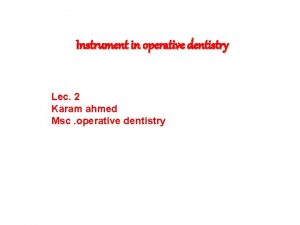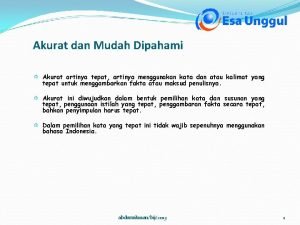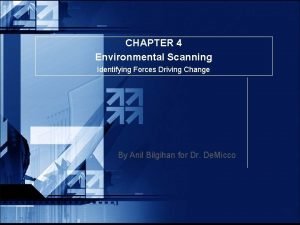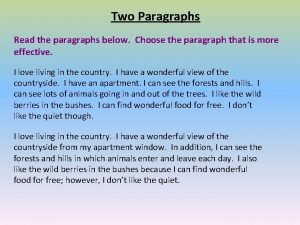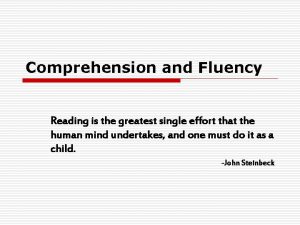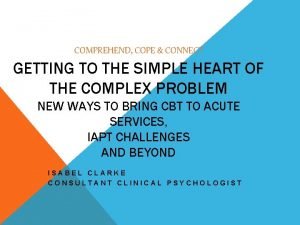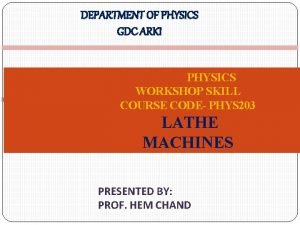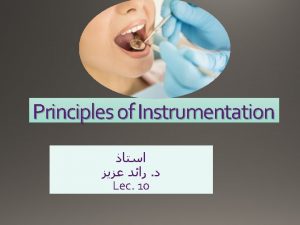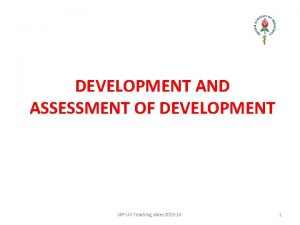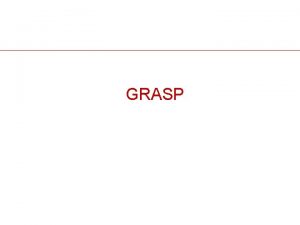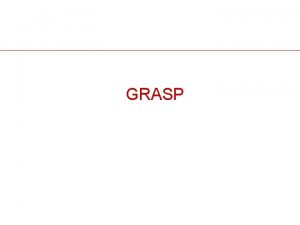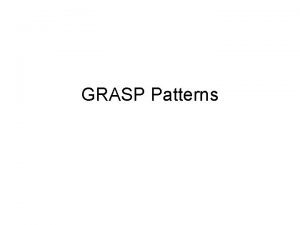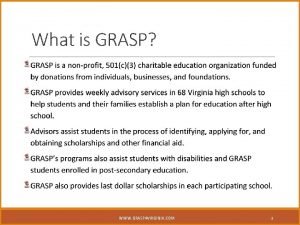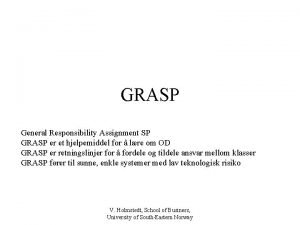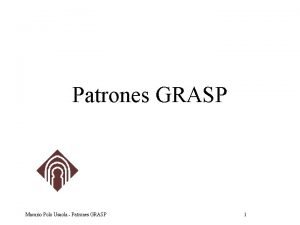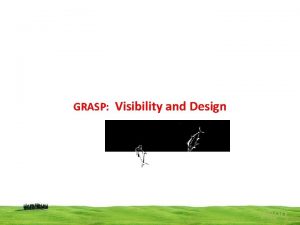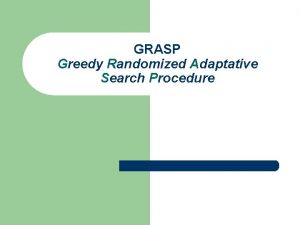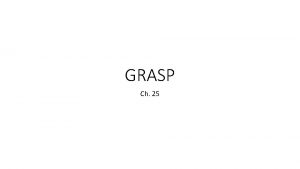COMPREHENSION Comprehend to understand grasp What is Comprehension












- Slides: 12

COMPREHENSION Comprehend- to understand; grasp

What is Comprehension? Reading comprehension has to do with how each of us thinks as we read, how we each solve problems, how we relate past personal experiences to new situations. We comprehend the text of a party, the text of the food market, and the text of friends. We “read” these situations and make meaning based on : n Previous knowledge that we have about each situation n Individual perceptions and feelings about each situation n Our interests

Good Readers… n Use past experiences in order to notice unfamiliar aspects of new settings (texts): connections n Use prior knowledge to figure out new situations n Take risks and make “educated guesses”, ask themselves questions and then search for the answers n Scan the text for something familiar to connect with memory n Review the text by going back (rereading) n Make comments to themselves about the text during reading n Become personally involved with the text or situation Adapted from Reading Comprehension: Self-Monitoring Strategies to Develop Independent Readers by Susan Mandel Glazer, Scholastic, 1992.

If we can make sure that our students are: Every teacher’s dream: Interested in what they are reading, using good reading strategies consistently, hearing good reading modeled frequently, using a variety of reading materials, being given enough time to learn to read, placed in situations that require them to think, given practice with test-taking techniques, then we can reach… Helping our students become readers who will… n Read well! n Love to read! n Perform well on reading tests! Adapted from what every principal should know about teaching reading (1997) by Marie Clarbo.

Comprehensions Factors Reader n Background knowledge n Vocabulary n Fluency n Comprehension strategies n Comprehension skills n Motivation Text n Genres (narrative, nonfiction, expository, poetry) n Text Structures (story elements, organization) n Text Features (conventions and literary devices)

Visual Cues

Comprehension Strategies n Activating background knowledge- KWLS, anticipation guide, RIVET, graphic organizers, predicting n Connecting-text, text-self, text-world, hot seat, logs, open-mind portraits http: //abavtooldev. pearsoncmg. com/myeducationlab/singleplay. php ? project. ID=Tompkins&clip. ID=Rhia_Nov. flv n Determining Importance- big idea posters/graphic organizers n Drawing Inferences- “read between the lines”; use background knowledge, look for clues, ask questions, make inferences, quickwrites n Evaluating-reflect in logs, conferences n Monitoring-think-alouds, bookmark technique, logs n http: //www. vdoe. whro. org/elementary_reading/Think. Aloud 1 -202010_F 8_Fast. Start_512 k. swf

Comprehension Strategies Continued n Predicting- guesses about the topic or genre, double entry logs n Questioning- literal & inferential , QAR, thick/thin n Repairing- “fix up strategies” n Setting a Purpose- to be informed, for literary experience & to perform a task n Summarizing-paraphrase the big ideas, summary cubes, SWBST charts n Visualizing-mental image, “photos of the mind”, role play, open-mind portraits

Comprehension skills- automatic behaviors which involve literal thinking n Recognizing details n Noticing similarities/differences n Identifying topic sentences n Comparing/contrasting main ideas & details n Matching causes and effects n Sequencing details n Paraphrasing ideas n Choosing a good title for a text n Recognizing the author’s purpose n Detecting propaganda n Distinguishing between fact and opinion

Assessment n “Kid Watching” during conferences and grand conversations n Cloze Procedure n Story Retellings n Running Records n Think-Alouds-orally, on Post-its or in logs n Commercial tools: DRA, IRIs and Comprehension Thinking Strategies Assessment by Shell Education

Motivation Teacher’s Role Students’ Role n Attitude n Expectations n Community n Collaboration n Instruction n Reading and writing competence n Rewards n choices *Administer attitude surveys and interest inventories to determine motivation and interests.

 Palm and thumb grasp in dentistry
Palm and thumb grasp in dentistry To understand recursion you must understand recursion
To understand recursion you must understand recursion Tepat dan akurat bermakna
Tepat dan akurat bermakna Comprehend cope and connect model
Comprehend cope and connect model Drive to comprehend
Drive to comprehend Read the paragraph below and
Read the paragraph below and Ability to comprehend meaning
Ability to comprehend meaning Comprehend cope and connect
Comprehend cope and connect The prophy angle is held in a __________ grasp.
The prophy angle is held in a __________ grasp. Physics workshop skills
Physics workshop skills General principles of instrumentation
General principles of instrumentation Who is her
Who is her Bidextrous grasp
Bidextrous grasp
